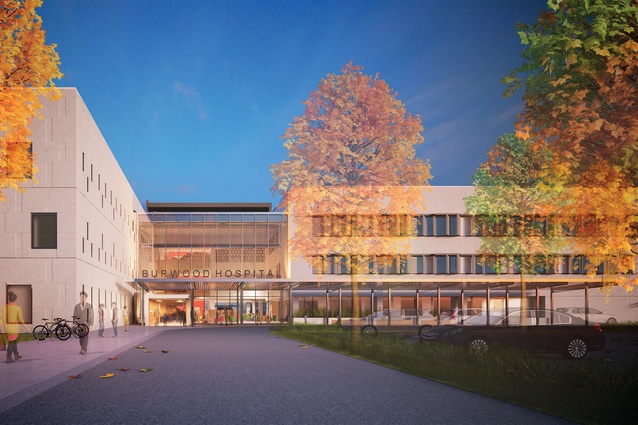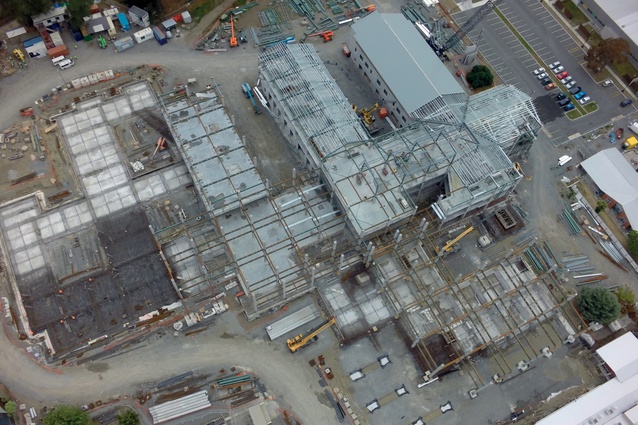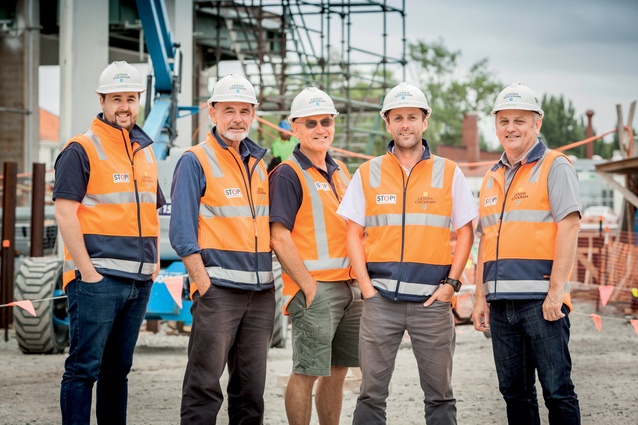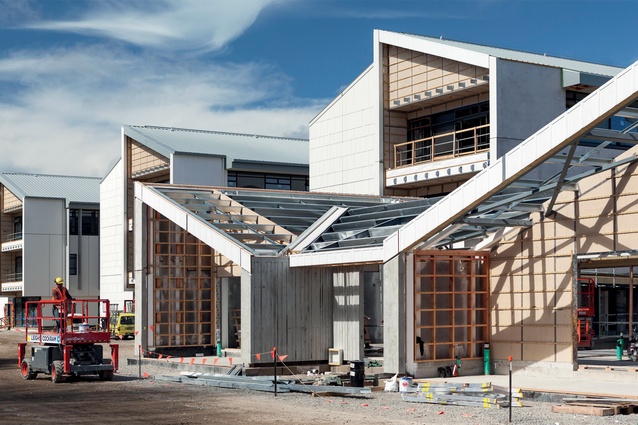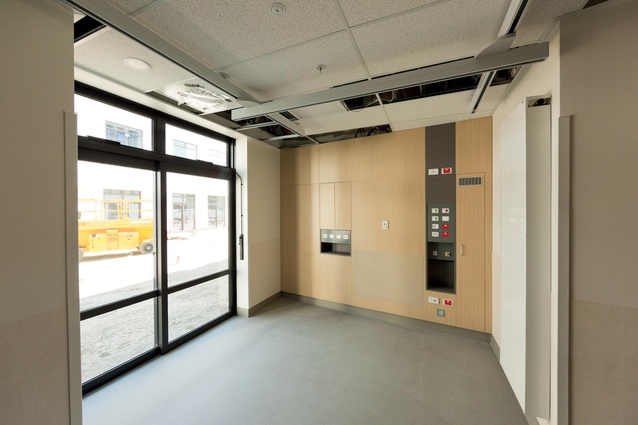Vital signs
In the aftermath of the Christchurch earthquakes, the Canterbury District Health Board discovered that many of its facilities had sustained irreparable damage, necessitating a rebuilding project of massive proportions.
“Across the organisation, 200 buildings and 14,000 hospital rooms were damaged,” says chief executive David Meates. “The Canterbury DHB was already planning new facilities and had presented a business case to Cabinet in September 2010, when the 2010 and 2011 earthquakes hit.
“To alleviate the pressure on services, in particular those for older people, Cabinet requested that work on the new facilities be fast-tracked and, as part of a $650 million government package to build new and improved health facilities for Canterbury, appointed the Hospitals Redevelopment Partnership Group to oversee the project. The group, headed by managing director of Todd Property Group Evan Davies, was tasked with working alongside Canterbury DHB as it worked to maintain services and repair earthquake damage to other facilities.”
When the developments at Burwood are completed next year, there will be three new ward blocks, providing 230 in-patient beds and a new front-of-house area that will include a main entrance, reception and cafeteria. Next to this will be a new extended Radiology Department and a new Outpatient Unit capable of managing 80,000 out-patient visits a year. Burwood will continue to specialise in care for older people and rehabilitation services, some of which will move from The Princess Margaret Hospital.
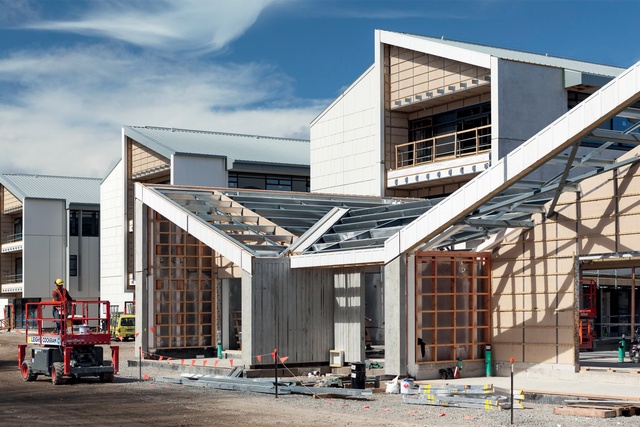
The two-stage development works are being carried out by a joint-venture entity comprising local firm Leighs Construction and Cockram Construction Australia – Leighs Cockram JV Limited, says project director Danny Tessier.
“The first stage, consisting of the back-of-house areas – kitchen and loading docks – was handed over in March this year. The next stage – mainly the ward buildings, new front-of-house amenities and ancillary buildings – has an end-of-first-quarter-2016 finish date.”
So far, Tessier says the project is 65% complete. “We are targeting completion of part of the wards buildings for client early use prior to handover of the final stage, when the balance of the ward buildings, Outpatient Unit, main entrance, new car park, landscaping, central plant including two new back-up generators, main switchboard, cooling tower and mechanical plant, and a new boiler house with biomass and diesel boilers, will be completed.”
Previously identified for expansion, one of the advantages of the Burwood site is the amount of space available for the new buildings, says Meates.
“This has enabled us to keep many of the existing services at Burwood operating while construction is being carried out. However, some buildings, such as those housing the Brain Injury Rehabilitation Service, along with the nurse’s hostel, did need to be demolished to make way for construction.
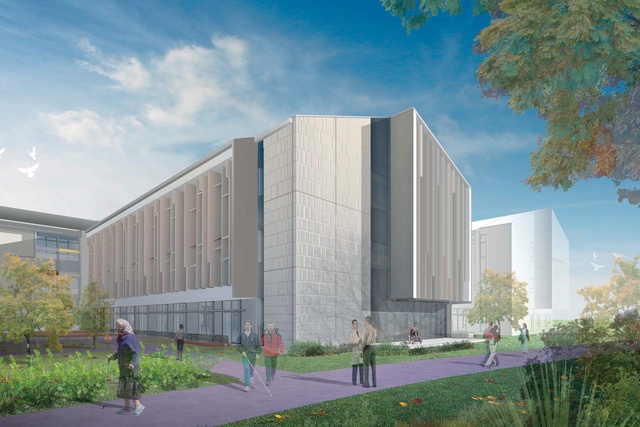
“Similarly, while there are repairs still to be made to damaged buildings, for example to the Spinal Unit, the redevelopment at Burwood enables us to use a new ward as a decant ward, allowing repairs to be completed without having to shut down beds. For the most part, services have continued to run smoothly, thanks to the extraordinary efforts of the staff to continue to deliver outstanding care to our patients.”
This extra space also meant construction could continue relatively unhampered, although building around a working hospital did have its challenges.
“The construction site is mostly off to one side of the existing buildings, which means we’ve been able to minimise the amount of disruption,” says Tessier. “As with most sites, there have been issues around availability of parking and the like; however, one issue you don’t tend to encounter often has been the need to suspend works while delicate operations were being carried out. Daily consultation with the hospital, as well as weekly notices to the neighbours, has resulted in a very smoothly-running project.”
What about supply chain and resource issues – have they affected the project?
“It’s been tough finding the required number of subbies at times; we’re averaging around 430 people on site per day, so it’s taken a fair amount of wrangling to ensure that has remained constant,” says Tessier. “In terms of materials, though, we’ve been able to source everything locally and without any hold-ups, which, when you consider the volumes we’re dealing with, is pretty remarkable.”

As well as the buildings themselves, there are also upgrades to the existing site infrastructure and provision of new infrastructure to be undertaken. “The redevelopment has meant that existing infrastructure can be upgraded as well,” says Tessier; “while new services can be implemented too. These include new high-voltage incoming electrical mains, fire protection ring mains, potable water ring main, drainage ring main, water storage tanks, steam distribution from the new boiler house to existing and new buildings, new data/communications cable supplies, and drainage connections to new sewer and stormwater infrastructure. This will make Burwood one of the most up-to-date and sustainable health facilities in the country.”
Sustainability was one of the key design factors in the development, says Meates. “On the Burwood site, wards have been designed to suit different ways of working (models of care) now, with flexibility to change in the future. A long-life, ‘loose fit’ philosophy has been taken with the design of all new buildings. There is also space allowed for potential new theatre facilities later on.
“The current coal-fired boilers are being replaced with two new high-tech biomass boilers, capable of burning high-moisture-content wood waste including forestry clearings, which will produce steam for heating and hot water. This is part of an increasing commitment by Canterbury DHB to use renewable energy sources wherever possible.
“Other projects include the Clever Commuters scheme, which has been developed to encourage our 9500 staff to bus, cycle or carpool to work as a measure of reducing their own personal carbon emissions, as well as initiatives to lower electricity and waste disposal costs by improving recycling rates and encouraging electricity conservation. Our aim with these projects is to create health facilities that meet the needs of Canterbury’s population now and in the future, based on credible research and worldwide best practice. Our guiding principle is to provide the right care at the right time, in the right place, by the right person.”

